Travel
Eriko Horiki Time Travels the Art of Washi into the 21st Century – COOL HUNTING®
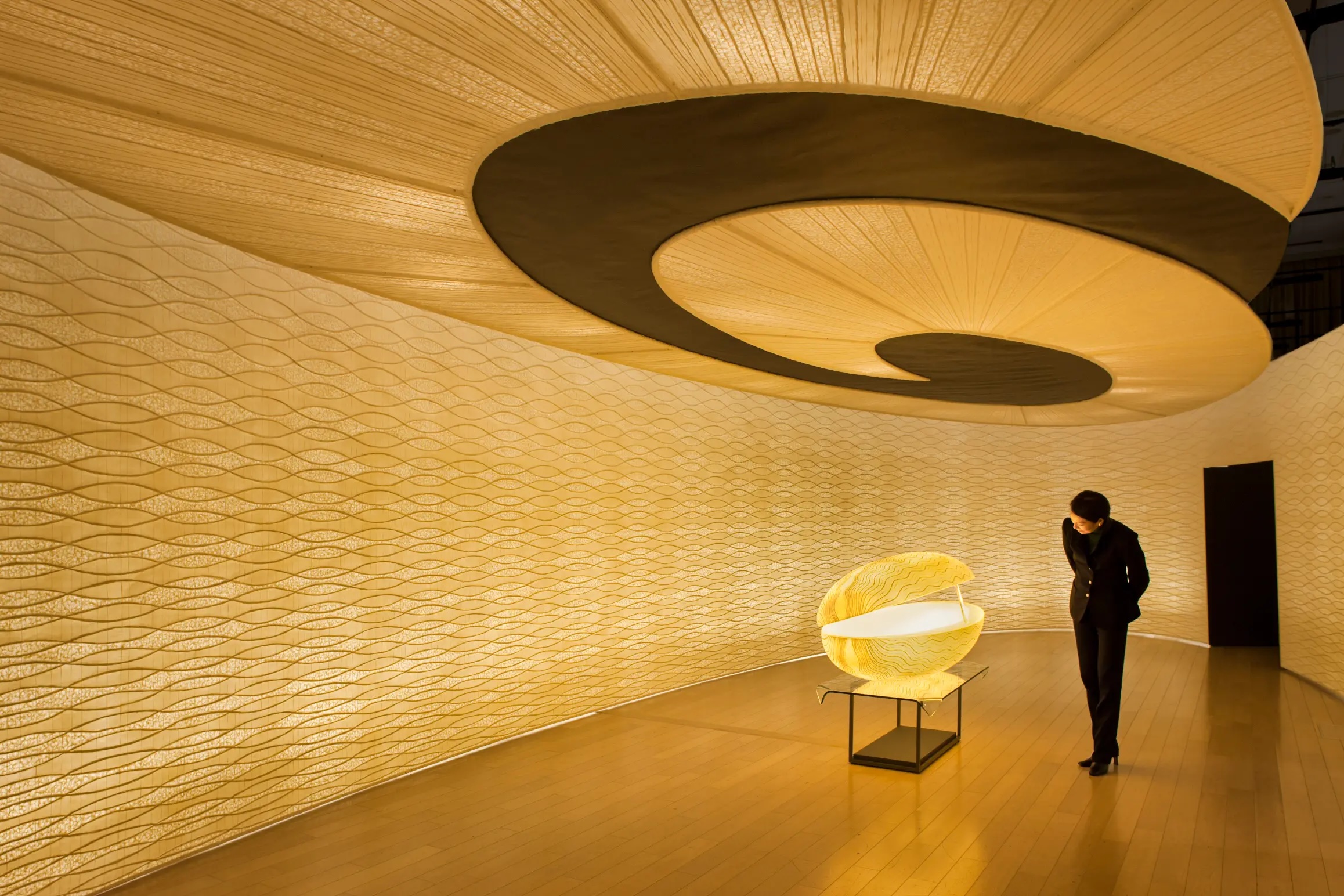
From large-scale installations to the labels of Suntory spirits, the artist crafts visionary washi applications for the future
Suntory’s exquisite Roku Gin bottle tells the story of its contents like a storybook. Created by Suntory’s lead designer Akiko Furusho, the six-sided bottle (“roku” translates to six in Japanese) is embossed with images of the seasonal ingredients that the Suntory distillers add to classic gin botanicals to achieve their desired balanced flavor profile. The label, crafted by washi artist Eriko Horiki with calligraphy by Tansetsu Ogin, wraps the center of the bottle in beautiful hand-made paper. Cool Hunting visited Horiki at her showroom in Kyoto to learn about the tradition of washi, to see some modern applications for this artisan-made material, and to explore the connection of Japanese gift-giving rituals to Suntory’s label design.
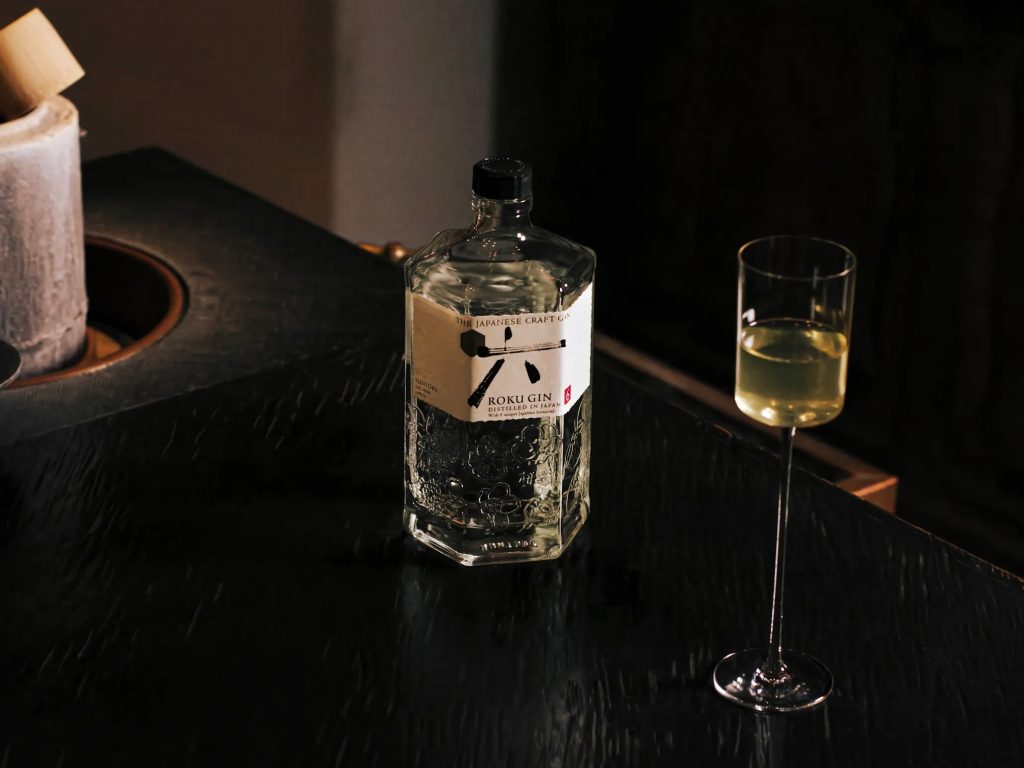
“Washi paper consists of four layers. The first layer is white. We believe this white paper, this white washi, leads to God,” explains Horiki. She explains that, for special occasions, it is customary for Japanese people to wrap presents with washi paper and give gifts of cash with a piece of white paper to purify the money. As a designer of large-scale installations, washi paper walls and sculptural pieces, Horiki is a pioneer in bringing the art and craft of washi-making into the modern world. Since 1989, she has been designing the labels and making washi for Suntory whisky and gin bottles. The Roku Gin bottles are wrapped in white washi as a reflection of warm hospitality and generosity and as an expression of the pristine spirit inside the bottle.
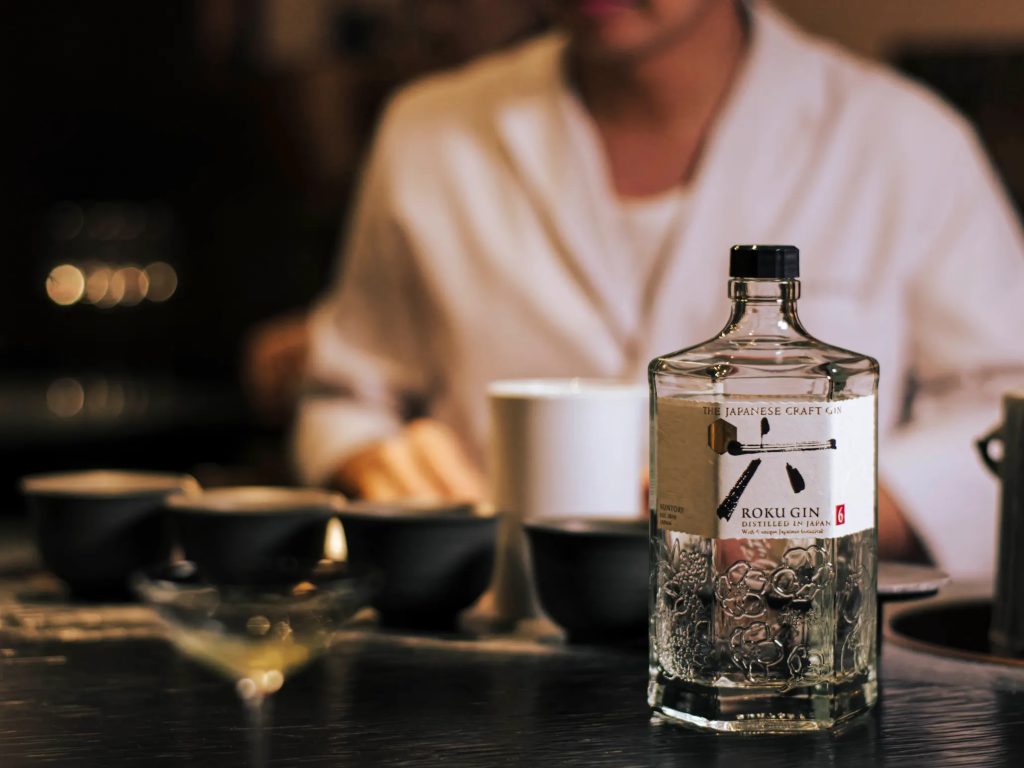
Traditionally washi is made from carefully cleaned pure white fibers. As Horiki became more and more involved with producing washi, she was inspired to innovate and began to add colorful and metalic fibers between the layers. “That’s why I was hated so much by my colleagues when I started 37 years ago. In those days, white paper was the only way,” she says. When she was 24 years old, she began to experiment by adding sand or different colors and felt a significant amount of pushback from traditional washi craftspeople. “Even when I greeted people, no one said hello to me,” she remembers.

That all changed as Horiki began to find admirers of her work. The wabi sabi nature of the natural fibers in washi lends itself to new textures and designs. The application for creating artistic expression and beautiful elements to interior design began to drown out the complaints and fears of the detractors. Horiki’s work has been exhibited and displayed in art and design exhibitions around the world. She has collaborated on many architectural spaces. Now visitors can see her work at Hotel Genji Kyoto and she currently has a large scale installation entitled “Forest of the village guardian” spanning three level of the view in the center of the Tokyo Midtown shopping complex.
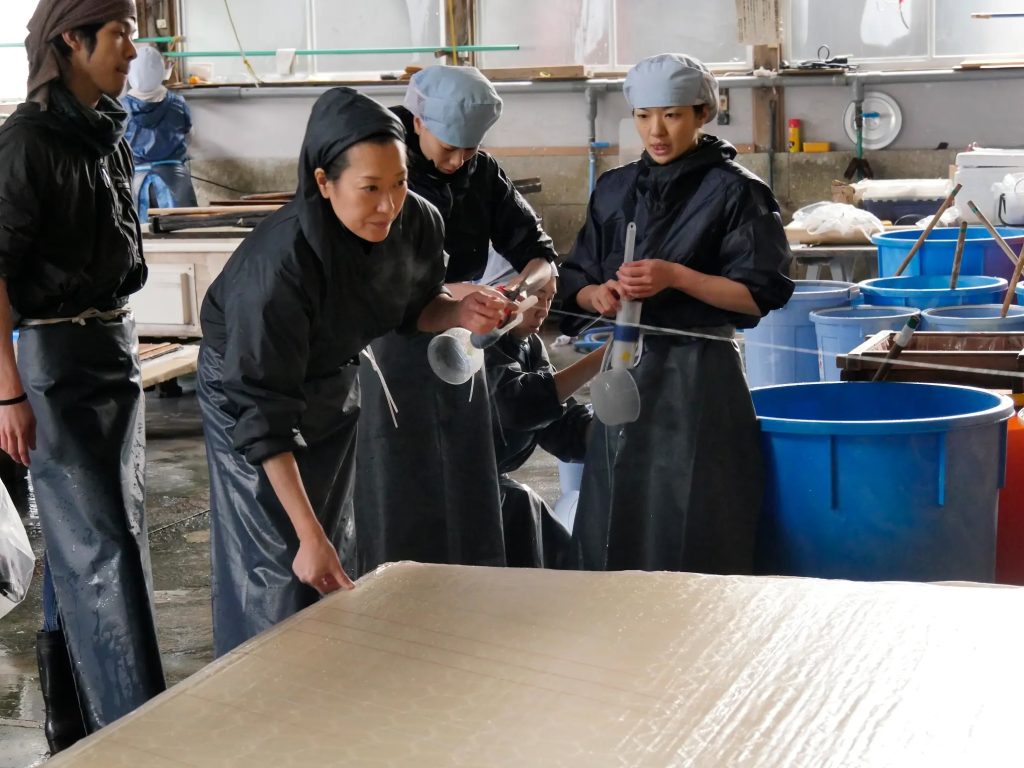
Water is an essential link to making washi—and gin distillation. For Horiki, the process begins with mulberry fibers being stirred in pristine water. Any bits of bark, impurities or grit is taken out by hand. The seasons and environment influence the expression and elements of the design in a variety of ways reflecting Japan’s harmonious relationship with the natural world. “Our work mostly consists of making six to seven layers,” says Horiki. “And the reason why the design is sandwiched with the white paper back and front is to purify the object.“
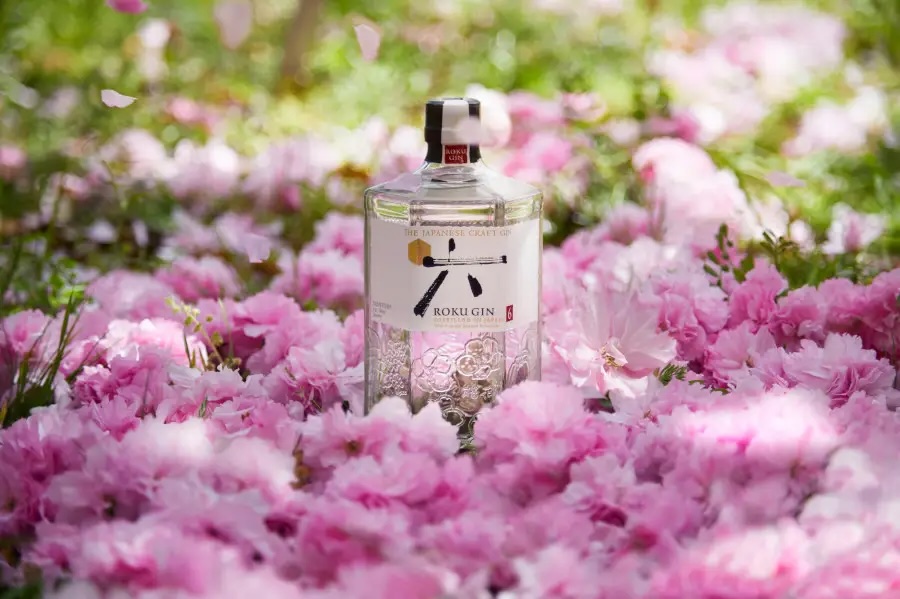
Purity is important to the gin-making process as well. In addition to traditional gin botanicals, Suntory includes six more to harness the flavors of the seasons in which they’re harvested: sencha and gyokuro tea leaves for summer, sansho pepper in the fall, yuzu peel in the winter and sakura flower and leaf in the spring. Cherry blossoms are also highlighted in the new Sakura Bloom Edition (only available in Japan and the UK, though watch for it in the US in the next year), which is the first release for their Seasonal Festival Collection. It’s been crafted to capture the ephemeral time of the year when Sakura are in bloom.
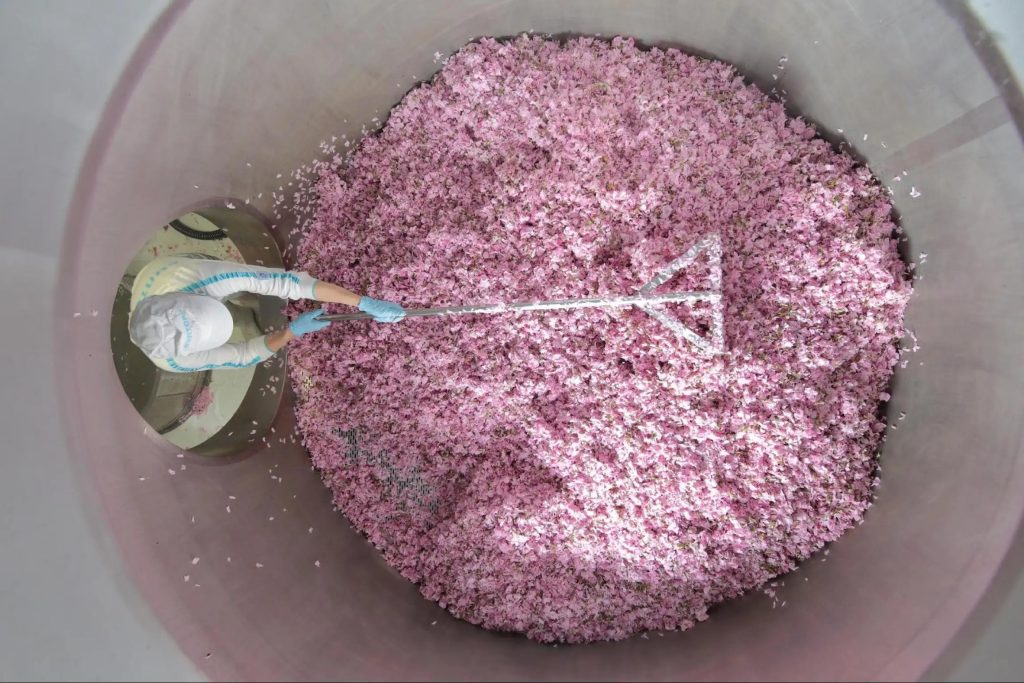
To extract optimal flavor, each ingredient is distilled seasonally in distinctive pot stills and combined at the end of the year to blend the flavors together to achieve the desired balance. For the Sakura Bloom Edition, the delicate scent of cherry blossom is drawn out through vacuum distillation in stainless pot stills, whereas the deep flavor of yuzu is achieved by distillation in copper pot stills. Roku’s complex yet harmonious flavor is the result of the unique Japanese sensitivity captured in the blending of the carefully crafted extracts of the 14 botanicals with Horiki’s washi label completing the visual story.

For the new Roku Gin Sakura Bloom Edition, Horiki was inspired by the image of falling petals—and she thus adds a pink layer in the middle of the label to evoke the cherry blossom petals floating in the springtime breezes. “The request I got from Suntory is to reflect how the cherry blossom petals are flowing,” she says. “Once I received the theme, like sakura pouring down, I made about 50 to 100 prototype designs and asked Suntory to pick one of them.”

Horiki expresses how happy she is that Suntory invests the resources necessary to have each label made with this soulful process, which is normally only utilized on pricier products. “On every single bottle the washi is different,” she adds. Horiki’s work with Suntory elevates the packaging, turning the bottle into a gift wrapped in white washi. Horiki also loves imagining the bottles being shared and enjoyed around Japan and all over the world.
CONTEXT: incontent
This placeholder is removed when the ad slot is configured.








